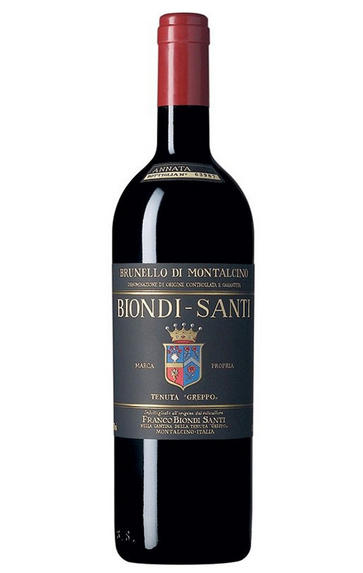
2010 Brunello di Montalcino, Biondi-Santi, Tuscany, Italy
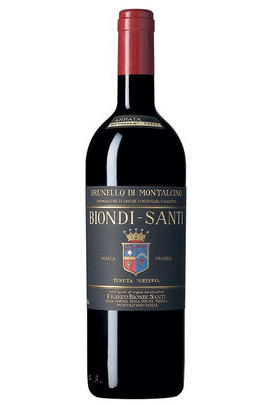
Critics reviews
96/100 points - Antonio Galloni. Tasting date: September 2015
Monica Larner - 04/03/2016
Jamessuckling.com - December 2014
About this WINE
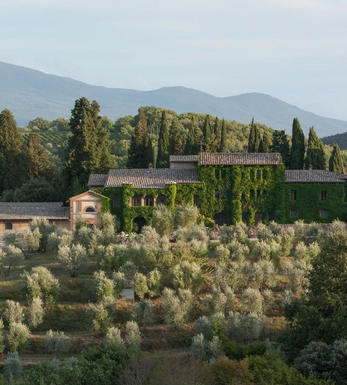
Biondi-Santi
Biond-Santi remains a beacon for traditionally made Rosso and Brunello di Montalcino.The Greppo vineyards of the Biondi Santi family date back to the 1800s. Clemente Santi, nephew of Giorgio Santi, was the first to create red wines suitable for ageing, and his oenological techniques learnt through agriculture, chemistry and science were far more advanced than his peers.
Clemente’s knowledge was passed on to his nephew Ferruccio Biondi Santi, who skilfully continued to run the Greppo estate, and managed to keep production running after the First World War. In 1932 he was described as ‘the inventor of Brunello’.
The estate has been passed down through the family to this day, and is currently managed by Franco Biondi Santi, along with the help of his two children, who will eventually take on the business themselves.
Brunello del Greppo now has twenty five hectares dedicated to its production, and the traditional agronomy and cellaring practises are still used to give this grape its character and quality.
Biondi-Santi harvests early. The wines are subject to a long maceration period, in steel for the straight Brunello, and oak for the Riserva, and are then aged in large oak casks.
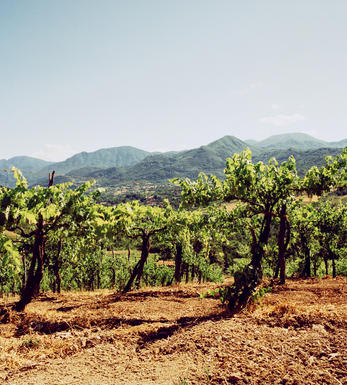
Brunello di Montalcino
Along with Chianti, Brunello di Montalcino is Tuscany's most famous DOCG and the region's boldest expression of Sangiovese. Located 30 miles south of Siena with the hilltop town of Montalcino as its epicentre, its 2,000 hectares of vines are naturally delimited by the Orcia, Asso and Ombrone valleys. Brunello is the local name for the Sangiovese Grosso clone from which Brunello di Montalcino should be made in purezza (ie 100 percent).
The Brunello di Montalcino DOCG has a whale-like shape: at its head, at 661 metres above sea level on ancient, stony galestro soils facing east and southeast lies the town of Montalcino, where the DOC was founded. As you follow the spine south towards the tail, the vineyards lose altitude – those around Colle Sant'Angelo are at 250 metres – while the soils become richer with iron and clay. Further east, in the shadow of the 1,734 metre Mont'Amiata lies the village of Castelnuovo dell'Abate where the vineyards are strewn with a rich mix of galestro, granitic, volcanic, clay and schist soil types.
Historically, the zone is one of Tuscany's youngest. First praised in 1550 by Leandro Alberti for the quality of its wines, it was Tenuta Il Greppo who bottled the inaugural Brunello di Montalcino in 1888. By 1929, the region had 925 hectares of vines and 1,243 hectares of mixed crops, while in 1932 it was decreed that only those wines made and bottled within the commune could be labelled as Brunello di Montalcino. Since then, the number of producers has risen from 11 in 1960 to 230 in 2006, while over the same period the vineyards have expanded from 1,000 hectares to 12,000. The region earned its DOC in 1966, and was upgraded to DOCG in 1980.
Brunello di Montalcino cannot be released for sale until five years after the harvest, or six years in the case of Brunello di Montalcino Riserva. During this time the wines should be aged for at least two years in oak, followed by at least four months in bottle (six months for Riservas); maximum yields are 55 hl/ha.
Rosso di Montalcino is declassified Brunello di Montalcino, released for sale 18 months after the harvest.
Recommended producers: Costanti, Fuligni, Lisini, San Giuseppe, Soldera, Cerbaiona
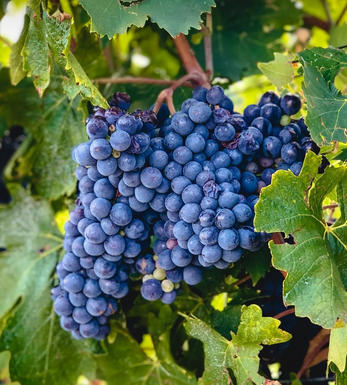
Sangiovese
A black grape widely grown in Central Italy and the main component of Chianti and Vino Nobile di Montepulciano as well as being the sole permitted grape for the famed Brunello di Montalcino.
It is a high yielding, late ripening grape that performs best on well-drained calcareous soils on south-facing hillsides. For years it was blighted by poor clonal selection and massive overcropping - however since the 1980s the quality of Sangiovese-based wines has rocketed upwards and they are now some of the most sought after in the world.
It produces wines with pronounced tannins and acidity, though not always with great depth of colour, and its character can vary from farmyard/leather nuances through to essence of red cherries and plums. In the 1960s the advent of Super Tuscans saw bottlings of 100% Sangiovese wines, as well as the introduction of Sangiovese/Cabernet Sauvignon blends, the most famous being Tignanello.


Buying options
Add to wishlist
Description
The hugely anticipated 2010 vintage lives up to the expectations I have of this famed property. The nose is brooding but reveals notes of parmesan rind, dark fruit, forest floor and coffee bean. The palate is delicate and yet concentrated with a strong wild strawberry character, fine tannins and a hint of leather. On the finish there is sweet fruit, freshness and balance. The wine will age gracefully and should drink well for a few decades at least. 2010 Brunello is not to be omitted from one’s cellar and there is no need to look further afield than this great estate for a superb example from a magical vintage.
Chris Pollington – Private Account Manager
The Biondi Santi property is steeped in history and following a degree in Oenology from Perugia University, the incumbent Franco Biondi Santi has taken on board the subtle art of wine-making learned at the side of his father, whilst simultaneously seeking to expand the estate’s holdings. The hugely anticipated 2010 vintage lives up to the expectations I have of this famed property. The nose is brooding but reveals notes of parmesan rind, dark fruit, forest floor and coffee bean.
The palate is delicate and yet concentrated with a strong wild strawberry character, fine tannins and a hint of leather. On the finish there is sweet fruit, freshness and balance. The wine will age gracefully and should drink well for a few decades at least. 2010 Brunello is not to be omitted from one’s cellar and there is no need to look further afield than this great estate for a superb example from a magical vintage.
wine at a glance
Delivery and quality guarantee